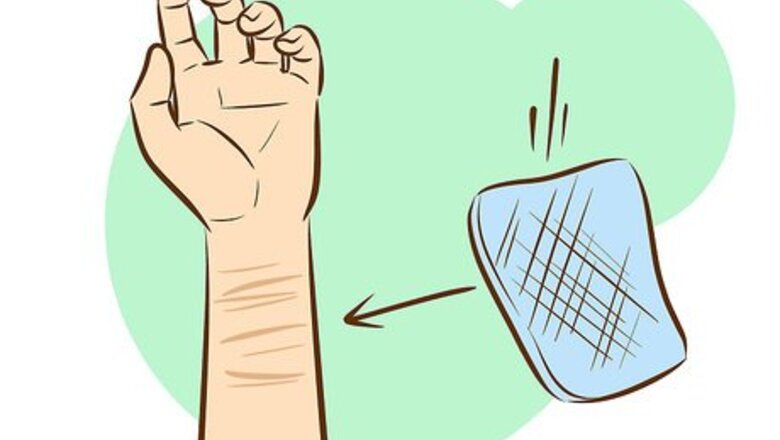
views
Using Over-the-Counter Remedies
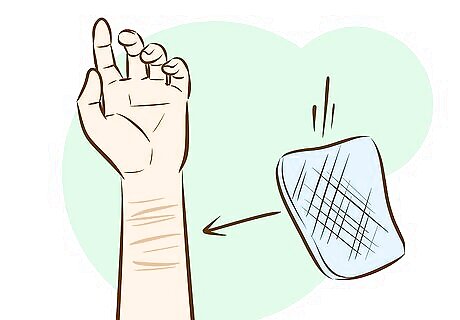
Try a silicon gel sheet. A silicon gel sheet is an adhesive patch that is applied to the scarred area. These can be used to reduce the appearance of scars within 2-4 months. Wear a silicon gel sheet on your scarred area for at least 12 hours every day for 2-4 months. Studies show that silicon gel sheets can also help flatten scars.
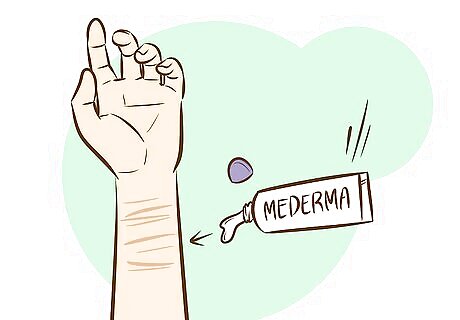
Use Mederma. This topical gel is used to reduce the appearance of scars. It contains a number of different ingredients that are considered to work together to repair skin, making it look smoother and softer. A tube of Mederma costs between $15 and $30. Apply Mederma to the scarred area once per day for 8 weeks if you are using it on a newer scar. For older scars, apply Mederma once per day for 3-6 months. Some studies have found that Mederma doesn’t make much more difference to scar reduction than applying petroleum jelly on the scarred area.
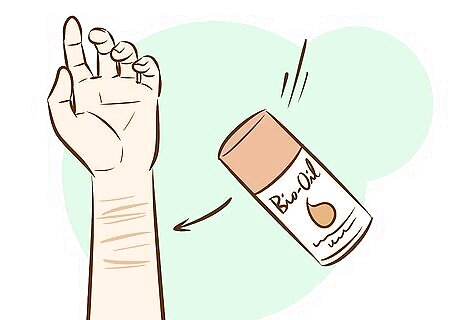
Try Bio-Oil. This oil is applied directly to the surface of scars to reduce their appearance. It also helps smooth out uneven skin tone, useful when your scars are pink, red or brown. A 2-ounce bottle of Bio-Oil costs about $10 and is available at drug stores and online. Do not use on the skin around your eyes, as this skin is very delicate.
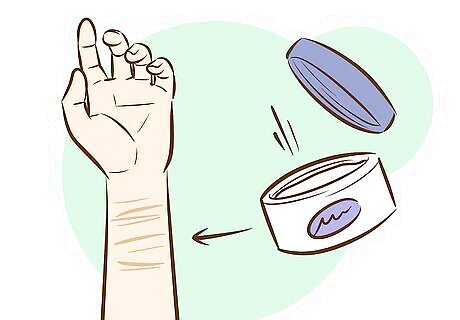
Try other scar reduction creams or gels. There are a number of other scar treatment gels and creams that may help reduce the appearance of scars. Available at drug stores or online, some brands include Selevax, Dermefface FX7, Revitol Scar Cream, Kelo-Cote Scar Gel. These range widely in price, which should be taken into consideration given that you’ll wear the cream or gel for several weeks or months to reduce your scar’s appearance.
Getting Medical Treatment
Talk to a dermatologist about what treatment is right for your type of scar. The type of treatment you use really depends on the type of scar you have. Schedule an appointment with a board-certified dermatologist and ask them about your treatment options. Your dermatologist may recommend topical retinoids or other topical medications, injected or topical steroids, or procedures such as resurfacing.
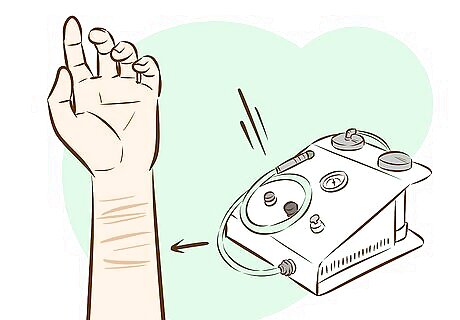
Get dermabrasion. Dermabrasion is a procedure that removes the very top layer of skin, similar to scraping your knee. The skin will then heal like a skinned knee will heal. This procedure requires local anesthetic for a small area of skin, or a more involved anesthetic for a larger area of skin.
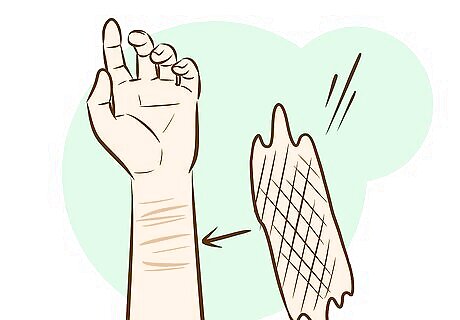
Ask about skin grafting. This surgical treatment involves removing the very top layer of skin in the affected area and covering it with very thin skin patches taken from the thigh or other part of the body. The skin patch will cover the scars and may eventually blend into the surrounding skin after about a year. This process requires local or general anesthesia, depending on the size of the scars. Skin grafting is going to leave you with a scar that doesn’t look self-inflicted.
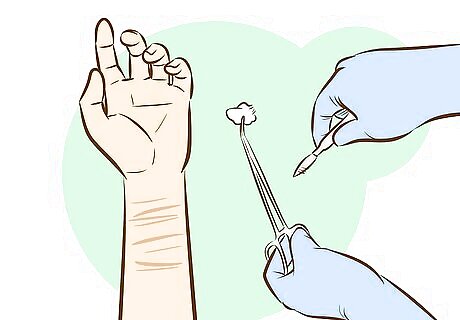
Get scar revision surgery. Scar revision surgery is a procedure that changes what your scar looks like by cutting out scar tissue and resewing the skin. A surgeon can alter the position or size of a scar, making the scar look less like a self-inflicted wound.
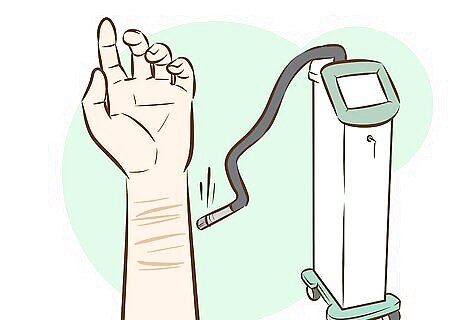
Try laser resurfacing. Laser resurfacing involves treating the skin over multiple sessions, heating the skin with laser light and inducing new collagen and elastin in the skin to form. You will receive local anesthesia and a sedative for this procedure You may experience side effects with this procedure, including redness and itchiness, along with swelling of the skin.
Using Natural Remedies
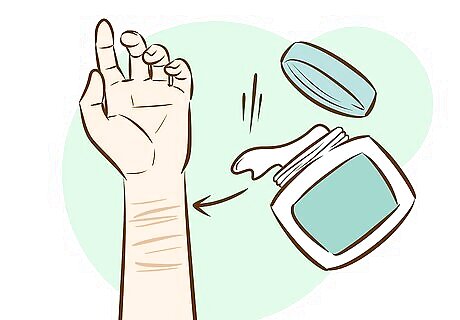
Apply petroleum jelly to fresh scars. Petroleum jelly (Vaseline) is a derivative of the oil refining process and is used to create a water-resistant barrier on the skin. It can be helpful in reducing scarring because it keeps the skin moist and covered. Apply petroleum jelly to the scarred area once a day. Petroleum jelly does not seem to have an impact on older scars.
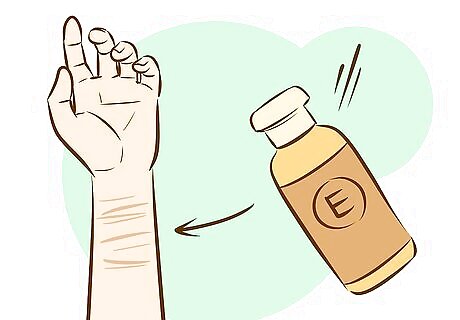
Use vitamin E oil. Vitamin E is typically available in capsules or in small bottles in health food stores or health food sections of grocery stores. Break open a capsule and drip the oil onto your scar. Massage it gently into the skin. Alternately, use a lotion with Vitamin E, rubbing the lotion on your skin twice a day. There are conflicting accounts as to the efficacy of Vitamin E for removing or reducing scars. It also may cause skin irritation for some people.
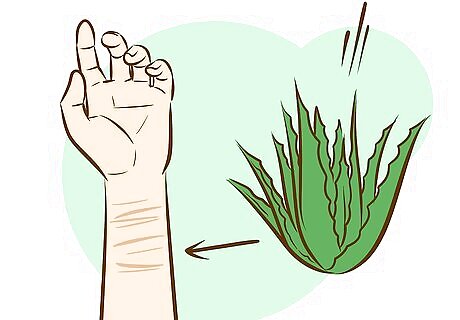
Try aloe Vera. Aloe Vera is a plant with multiple health benefits, including reducing inflamed skin and moisturizing skin. Aloe Vera gel can be removed directly from the plant’s leaves or it can be purchased in a bottle in a natural foods store. Apply gel to your scarred area at least once a day.

Use lemon juice. Lemon juice is a natural bleaching agent and can help lighten scars. Clean your skin and then apply lemon juice to the scarred area using a cotton ball. Let the area sit for about 10 minutes and then rinse it clean.
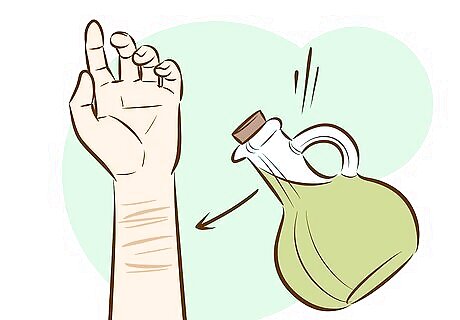
Use olive oil. Extra virgin olive oil can help reduce the appearance of scars. Massage a small amount of 100% extra virgin olive oil into your skin once or twice a day for several weeks or months.

Try other home remedies. There are many other natural home remedies that can be used to help reduce the appearance of scars. Some of these include: lavender oil, chamomile tea, cod liver oil, baking soda, cocoa butter, tea tree oil and honey. Search online for natural scar reduction remedies.
Covering Up Scars with Makeup
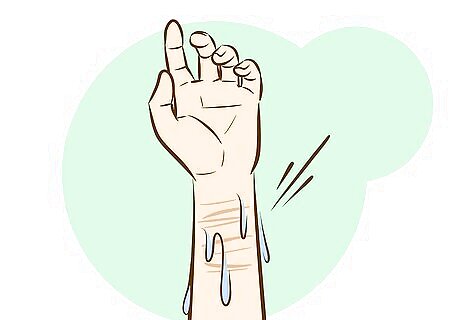
Clean and dry your skin. Makeup is best applied to skin that is free of oil or dirt. Wash the area of your skin where you plan to put the makeup and pat it dry.
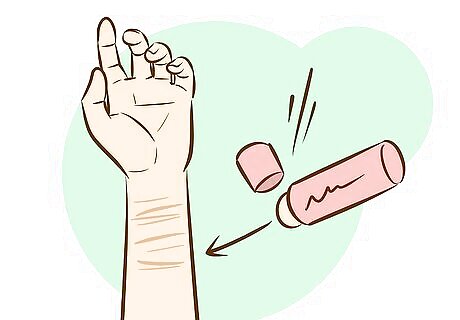
Use concealer and foundation. Concealer and foundation can be combined to cover up many scars, especially if they are smaller or lighter in color. Choose a concealer that is a few shades lighter than your skin. If your scar is red or pink, choose a foundation with green undertones. For a brownish scar, choose a concealer with yellow undertones. Apply by dabbing the concealer on your scar. Let it dry for a few minutes. Choose a foundation that is the same shade as your skin. Blot the foundation over the area, taking care to blend in the edges. Apply translucent powder to the area. This will help seal the foundation and prevent it from smudging too much.

Use a tattoo concealer. Tattoo concealer is a heavy duty, usually water-resistant concealer that can be applied to the skin to cover marks such as tattoos. It can be purchased at drug stores. Some of the top-notch tattoo concealers cost $20 or more for a tube. Many also come with a setting powder to set the concealer so that it won’t smudge. Choose a shade of concealer that matches your skin tone where your scar is.
Wearing Clothing and Accessories to Hide Scars

Cover scars with long-sleeved shirts and long pants. If you have scars on your arms or legs, wearing clothing to cover up the scars will prevent other people from seeing them. This is not usually a good solution for summer weather.

Wear tights. Tights can cover legs at almost any time of the year and can be paired with dresses, skirts or even shorts. Get lighter-weight tights for warmer times of the year and heavier-weight tights for cooler times of the year.

Wear wrist accessories. If your scars are on your wrists, wear accessories that cover them up. Bracelets are useful, as are wristwatches. Sweatbands can be useful while you’re working out.

Wear modest swim coverings. If you want to go swimming, you don’t need to wear a swimsuit that bares a lot of skin. Choose a one-piece bathing suit, or wear swim shorts over your bathing suit. You can also wear a t-shirt or a surf shirt with swim shorts.
Choosing Other Methods

Wear sunscreen. New scars are especially sensitive to ultraviolet rays, which delay the time it takes for a cut to heal. The sun can also increase discoloration of scars. Use sunscreen when you’re outdoors with your scarred skin exposed.

Get a tattoo to cover the scar. Your scar is unlikely to go away entirely, but you can cover it up and redirect attention away from it with a tattoo. Work with a tattoo artist to design something that is both meaningful to you and functional in terms of covering the scar.

Accept your scars. Your scars may be something you want to hide or avoid talking about, but they can also remind you about your personal strength. Acknowledge that you went through a very difficult stage in your life and you have grown stronger since then. What does not kill you makes you stronger.


















Comments
0 comment